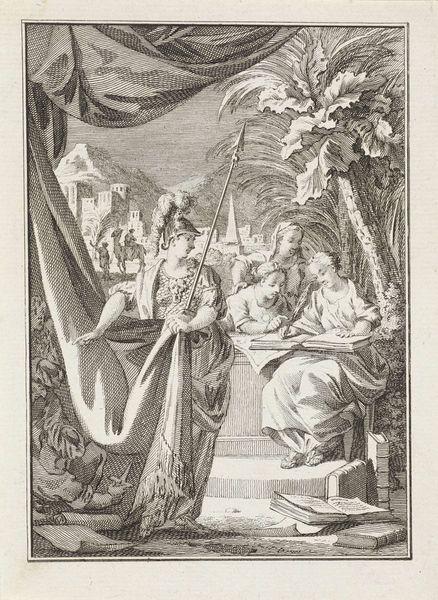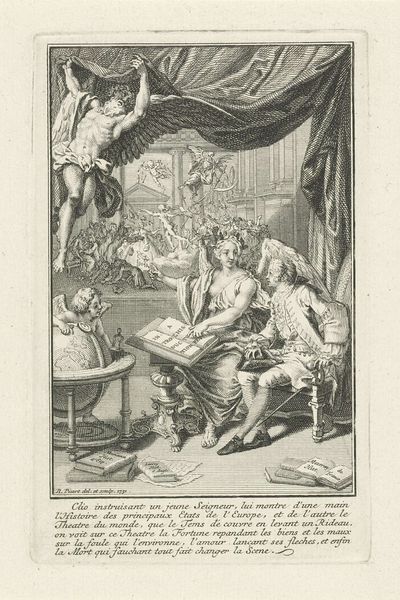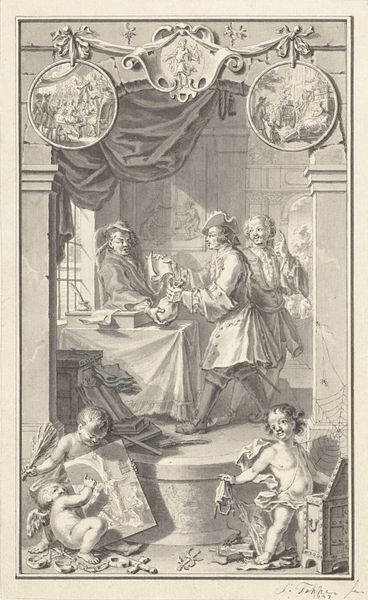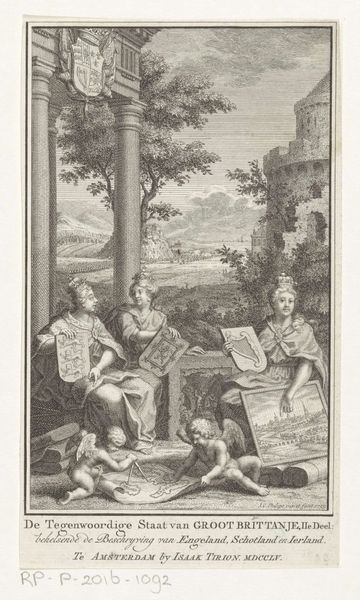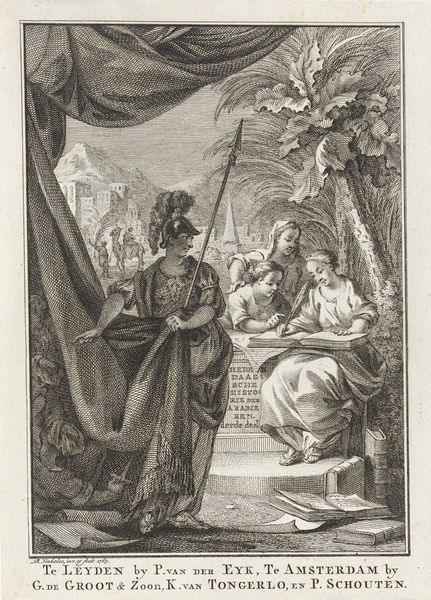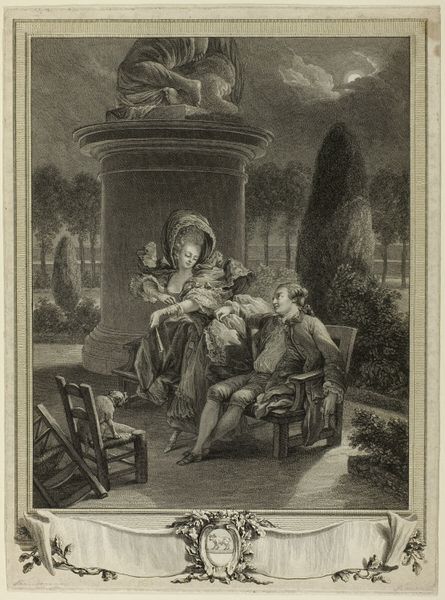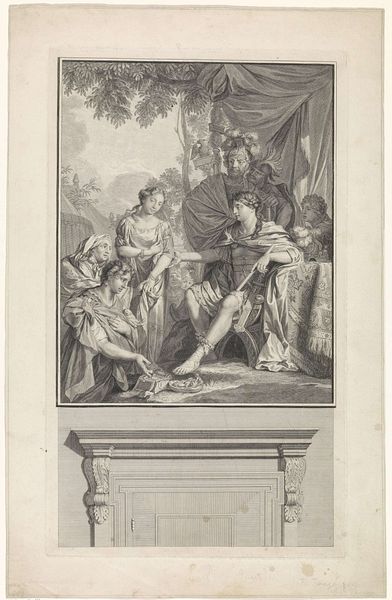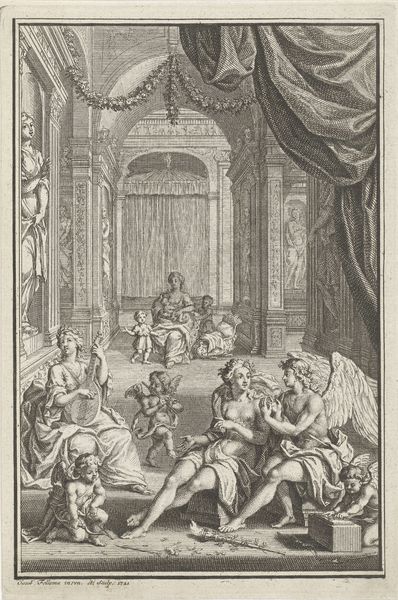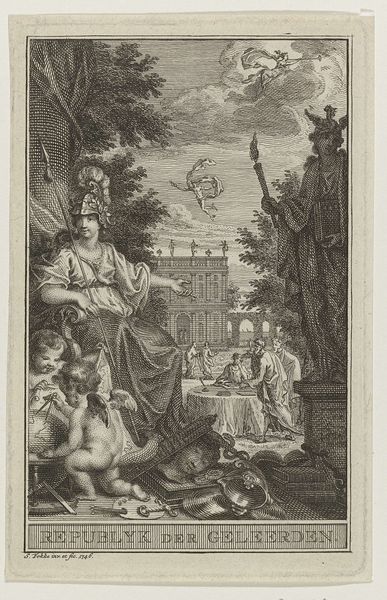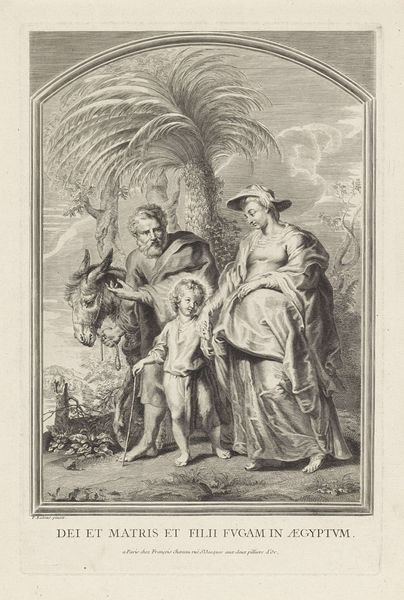
Allegorische voorstelling met Geschiedenis en mannen met afbeeldingen van (kerk)interieurs 1748
0:00
0:00
jancasparphilips
Rijksmuseum
drawing, print, ink, engraving
#
drawing
#
allegory
#
baroque
# print
#
old engraving style
#
ink
#
history-painting
#
engraving
Dimensions: height 212 mm, width 152 mm
Copyright: Rijks Museum: Open Domain
Jan Caspar Philips created this allegorical print with etching around 1748. Note how the entire image emerges from an intricate network of fine lines incised into a metal plate, each one carefully placed to build up tone and texture. The etching process begins with covering a metal plate with a waxy, acid-resistant ground. The artist then draws through the ground with a sharp needle, exposing the metal. When the plate is immersed in acid, the drawn lines are etched into the surface. By repeating this process of applying ground, drawing, and etching, the artist can create areas of light and dark. Consider the skill required to control the acid's bite and the pressure of the needle. The resulting print demonstrates not just artistic vision, but also the mastery of craft. The technique allowed for the relatively quick reproduction of images for mass consumption, perfectly suiting the print's subject matter: historical documentation and moral instruction. This piece reveals the social and economic forces that shape artistic production. It reminds us that even seemingly straightforward images are the product of skilled labor, intricate processes, and complex cultural contexts.
Comments
No comments
Be the first to comment and join the conversation on the ultimate creative platform.
